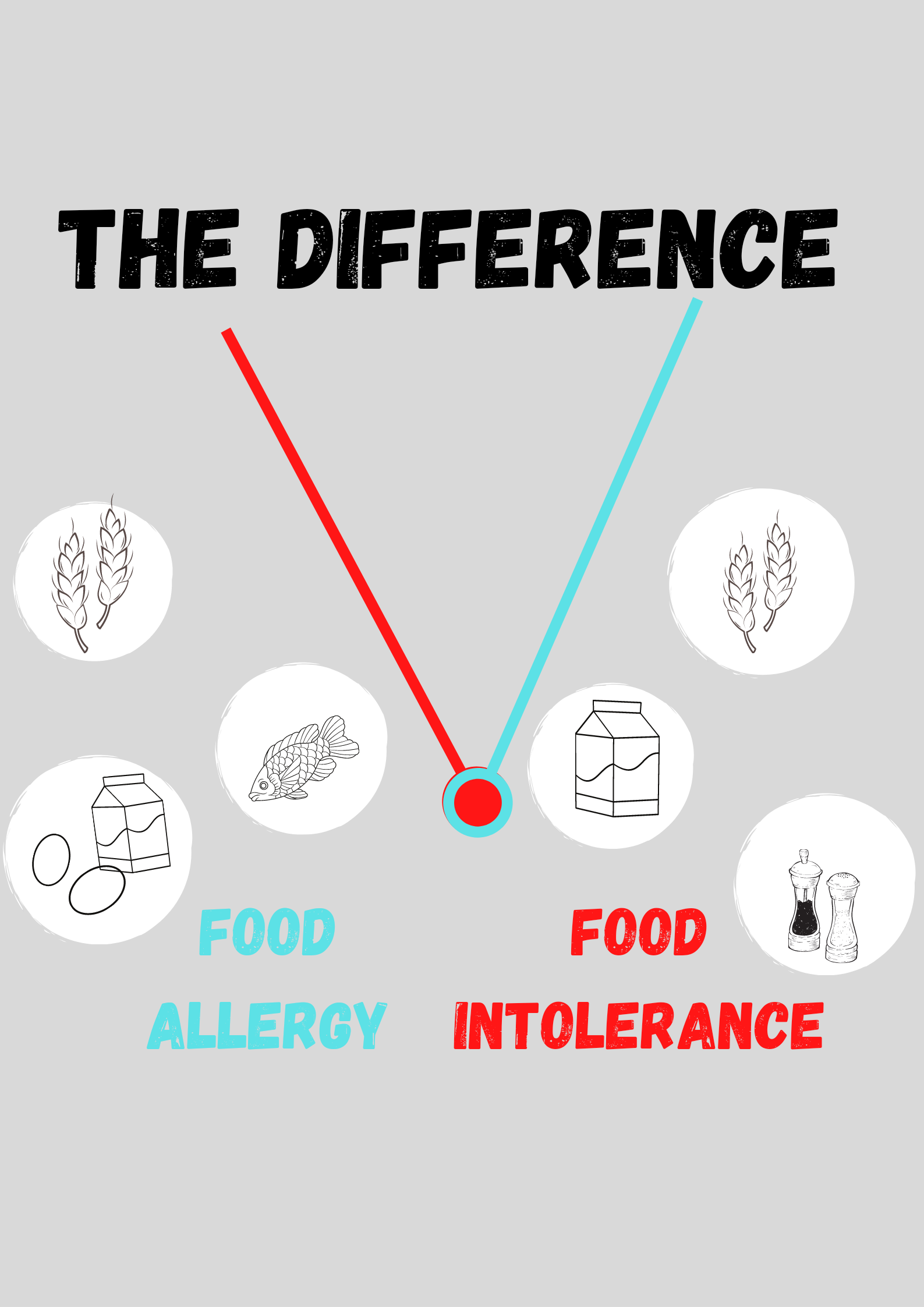

Food allergy and intolerance: The difference
Food allergy and intolerance may seem the same, in fact they may even have similar symptoms but there is a difference between them. One of the major differences between a food allergy and sensitivity is the body’s response. When you have a food allergy, your immune system causes the reaction. If you have a food sensitivity or intolerance, the reaction is triggered by the digestive system.
Although they have some similar symptoms there are specific symptoms to easily differentiate one from the other. They include the following;
- Symptoms of food intolerance include gas, bloating, diarrhea, constipation, cramping, and nausea.
- Symptoms of food allergy include hives, swelling, itching, anaphylaxis, and dizziness.
Food intolerance
If you have a food intolerance, you may be able to eat small amounts of the offending food without trouble. You may also be able to prevent a reaction. For example, if you have lactose intolerance, you may be able to drink lactose free milk or take lactase enzyme pills (Lactaid) to aid digestion. A food triggers an intolerance in your digestive tract. This is where your body can’t properly break it down, or your body reacts to a food you’re sensitive to. For example, lactose intolerance is when your body can’t break down lactose, a sugar found in dairy products.
You may be sensitive or intolerant to a certain food for a few reasons. These include:
- not having the right enzymes you need to digest a certain food
- reactions to food additives or preservatives like sulfites, MSG, or artificial colors
- pharmacological factors, like sensitivity to caffeine or other chemicals
- sensitivity to the sugars naturally found in certain foods like onions, broccoli, or Brussels sprouts
Symptoms of food sensitivity vary. But the symptoms of intolerance are all digestive related. These can include:
- gas and bloating
- diarrhea
- constipation
- cramping
- nausea
Food allergy
If you have a food allergy, you may be at risk of a life threatening allergic reaction (anaphylaxis) even if past reactions have been mild. Learn how to recognize a severe allergic reaction and know what to do if one occurs. You may need to carry an emergency epinephrine shot (Adrenaclick, Auvi-Q, EpiPen) for emergency self-treatment. Food allergies can be fatal, unlike a food intolerance or sensitivity. In extreme cases, ingesting or even touching a small amount of the allergen can cause a severe reaction.
Symptoms of food allergy include:
- skin reactions, like hives, swelling, and itching
- anaphylaxis, including difficulty breathing, wheezing, dizziness, and death
- digestive symptoms
Eight foods account for 90 percent of allergic reactions: milk, eggs, fish, shellfish, peanuts, tree nuts, wheat, and soybeans.
There are also non-Immunoglobulin E mediated food allergies. These reactions occur when other parts of the immune system are activated apart from Immunoglobulin E antibodies.
The symptoms of non-Immunoglobulin E reactions are typically delayed, and occur primarily in the gastrointestinal tract. They include vomiting, diarrhea, or bloating. Less is known about this particular type of reaction, and in general this type of response is not life threatening.
References
Food Allergy vs. Sensitivity: What’s the Difference? Written by Natalie olsen (published by healthline) https://www.healthline.com/health/allergies/food-allergy-sensitivity-difference
What’s the difference between a food intolerance and a food allergy? Written by James T C Li (Mayoclinic) https://www.mayoclinic.org/diseases-conditions/food-allergy/expert-answers/food-allergy/faq-20058538#:~:text=A%20true%20food%20allergy%20causes,often%20limited%20to%20digestive%20problems.
Related Blogs
FREE Sports class Demo at your preschool
Please fill the form to get more information and set up a FREE Go Alpha Demo at your preschool.




